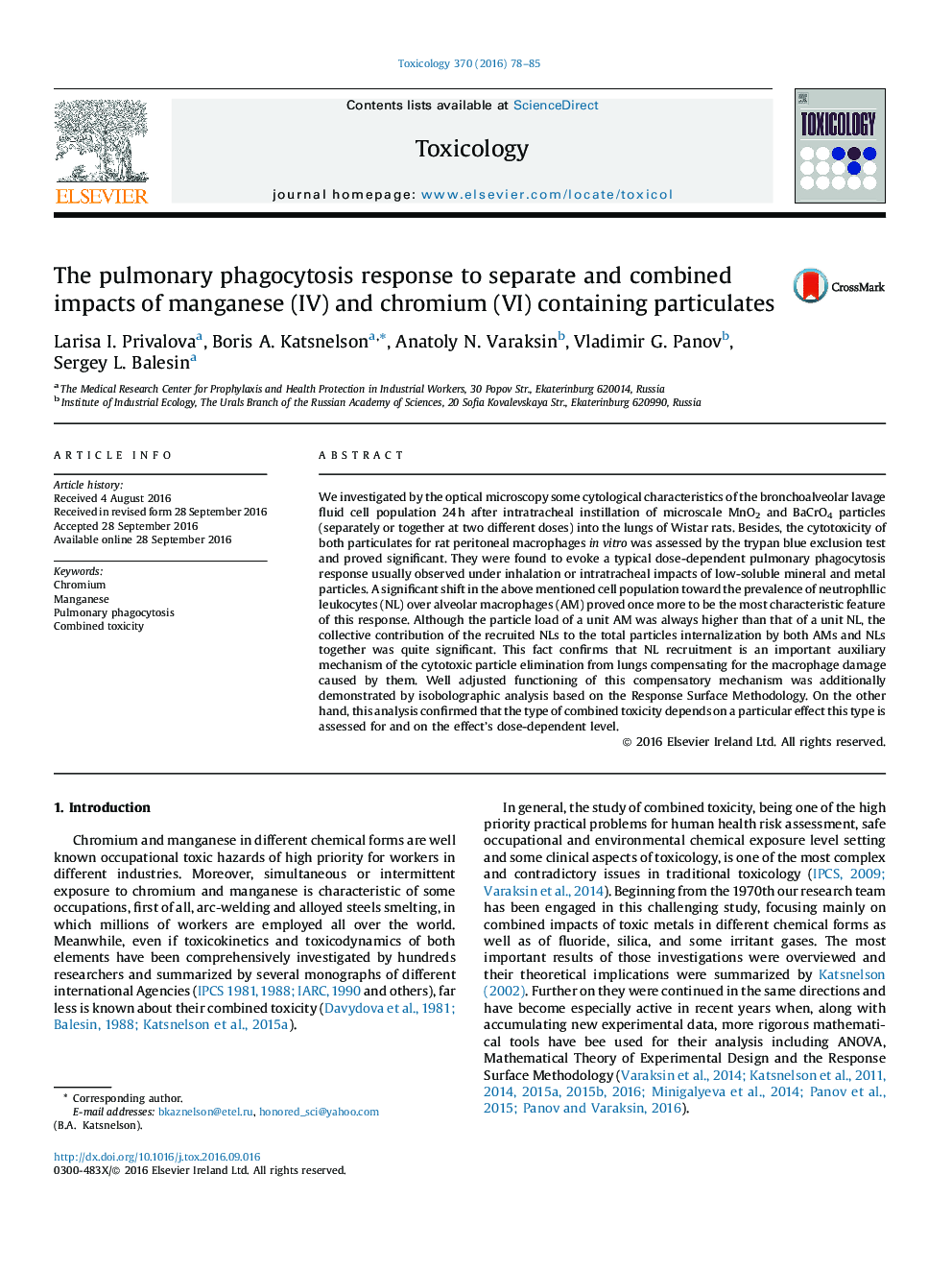| Article ID | Journal | Published Year | Pages | File Type |
|---|---|---|---|---|
| 5561944 | Toxicology | 2016 | 8 Pages |
â¢Intratracheal instillation of MnO2 and BaCrO4 particles evoked in rats a dose-dependent phagocytosis response.â¢Cytotoxicity of both particulates was shown in vitro by the trypan blue exclusion test on rat peritoneal macrophages.â¢Combined toxicity of these particles differed depending on the endpoint assessed and on the effect level.â¢The particle load of an alveolar macrophage (AM) was higher than that of an neutrophil leukocyte (NL) but the contribution of all NLs to the total particles internalization was significant.â¢The results support the postulate according to which NL recruitment is a fine-tuned auxiliary mechanism of pulmonary particle clearance.
We investigated by the optical microscopy some cytological characteristics of the bronchoalveolar lavage fluid cell population 24Â h after intratracheal instillation of microscale MnO2 and BaCrO4 particles (separately or together at two different doses) into the lungs of Wistar rats. Besides, the cytotoxicity of both particulates for rat peritoneal macrophages in vitro was assessed by the trypan blue exclusion test and proved significant. They were found to evoke a typical dose-dependent pulmonary phagocytosis response usually observed under inhalation or intratracheal impacts of low-soluble mineral and metal particles. A significant shift in the above mentioned cell population toward the prevalence of neutrophllic leukocytes (NL) over alveolar macrophages (AM) proved once more to be the most characteristic feature of this response. Although the particle load of a unit AM was always higher than that of a unit NL, the collective contribution of the recruited NLs to the total particles internalization by both AMs and NLs together was quite significant. This fact confirms that NL recruitment is an important auxiliary mechanism of the cytotoxic particle elimination from lungs compensating for the macrophage damage caused by them. Well adjusted functioning of this compensatory mechanism was additionally demonstrated by isobolographic analysis based on the Response Surface Methodology. On the other hand, this analysis confirmed that the type of combined toxicity depends on a particular effect this type is assessed for and on the effect's dose-dependent level.
